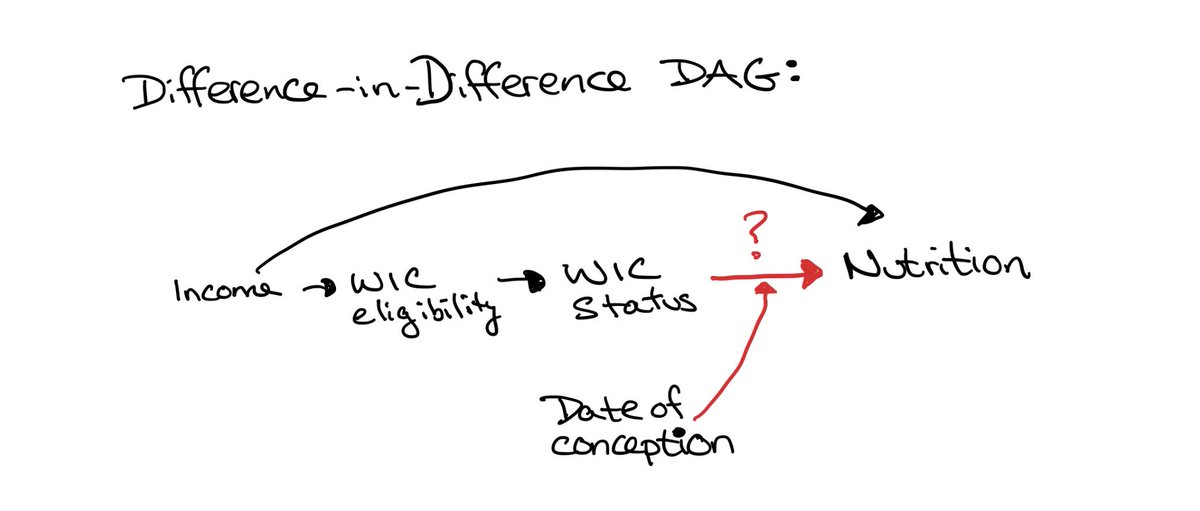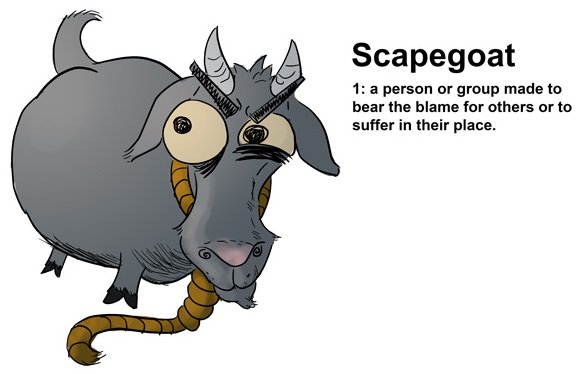Today, let’s talk about Difference-in-Difference analyses and how to use them to estimate the impact of policy changes!
Our example paper is from our May issue by @DrRitaHamad & colleagues.
#epiellie

Link👇🏼academic.oup.com/aje/article-ab…
WIC stands for “Special Supplemental Nutrition Program for Women, Infants, and Children”, and provides vouchers for specific food combos (‘packets’) for low-income pregnant women & kids <5yo in the US.
That’s amazing, especially given that in their study population only 50-60% of eligible women actually received WIC.
Does that imply up to half of all US pregnancies qualify?!!
This is not an easy question to answer at all! But it’s *so* important!
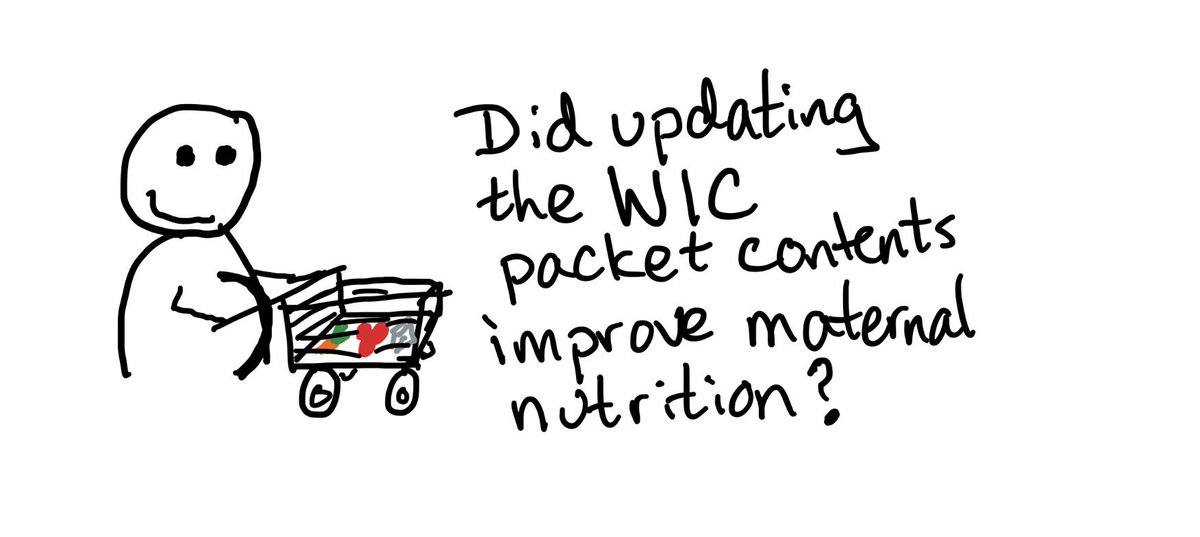
Let’s take a quick poll to see what you think and then I’ll tell you what I think. No peeking tho!
(Click tweet to see poll options)
WIC participation & nutrition is likely very confounded, not only because you have to be eligible but because getting signed up isn’t easy!
Plus, what is diet or nutrition even? Measuring that well is hard so how do we know if it changes?
Really we want to know that last one, but no one is in that group!
This is where @DrRitaHamad & colleagues had the great idea to use the Difference-in-Difference (DiD) method.
First, we need to assume that *if the 2009 change hadn’t been made policy* then the diet of WIC recipients wouldn’t have changed any differently from the general population’s diet over the study.
So, do u think diet would have changed *differently* for WIC recepients vs non-recipients without new packet?
(Click to see poll options)
In the #epigif below suppose the purple line is diet among non-WIC recepients (including those eligible & not eligible) measured by the Healthy Eating Index.
Then suppose the blue line is the diet among WIC recipient. It may have changed slope in 2009.
Difference-in-difference is actually pretty simple!
Here’s an #epigif on how it works
I’ve added the regression equation & labeled the differences to match the coefficients.
Our target is beta1👇🏼
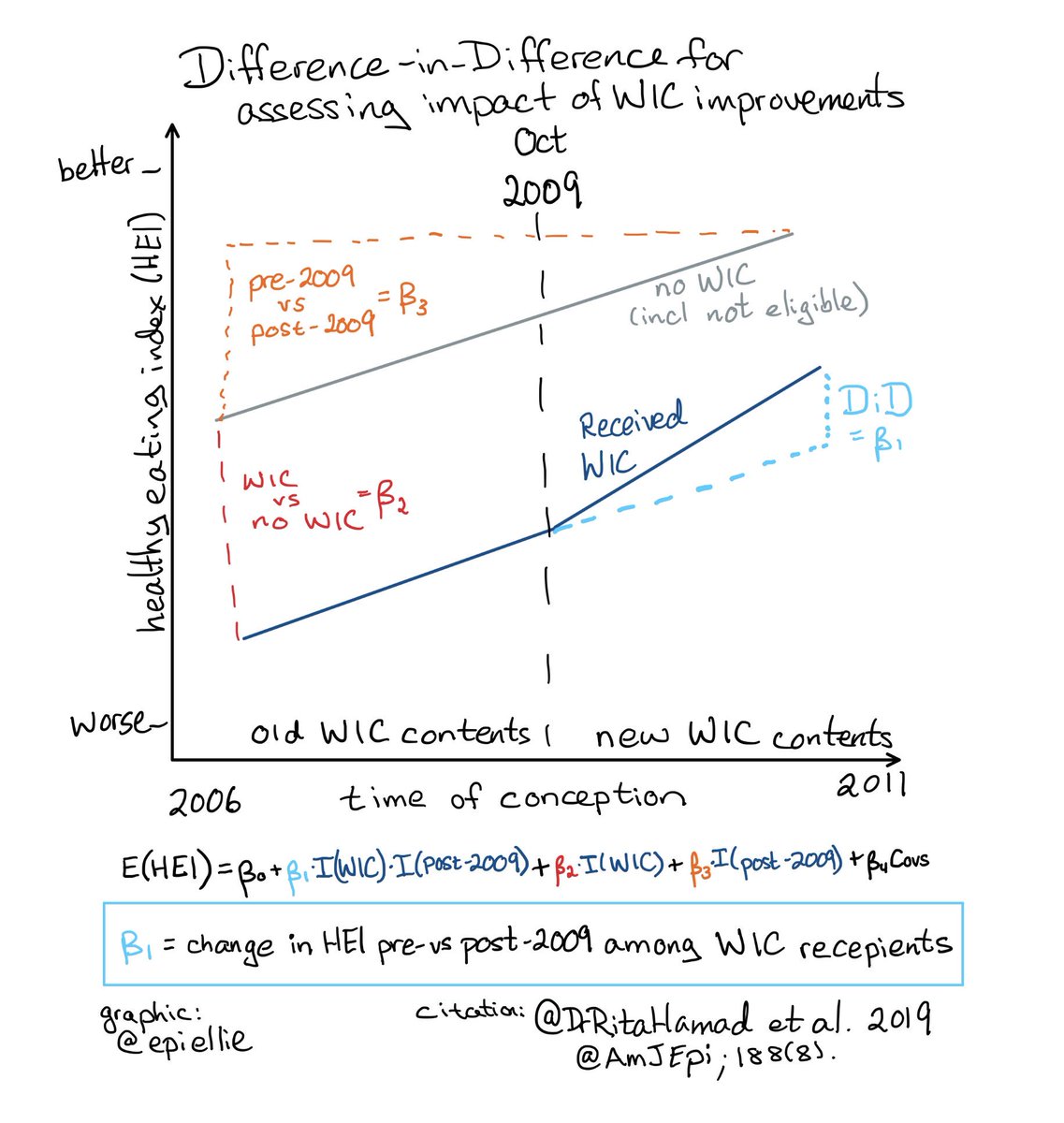
What do you think? Anyone from #econtwitter care to comment on these proposed #DiD DAGs?
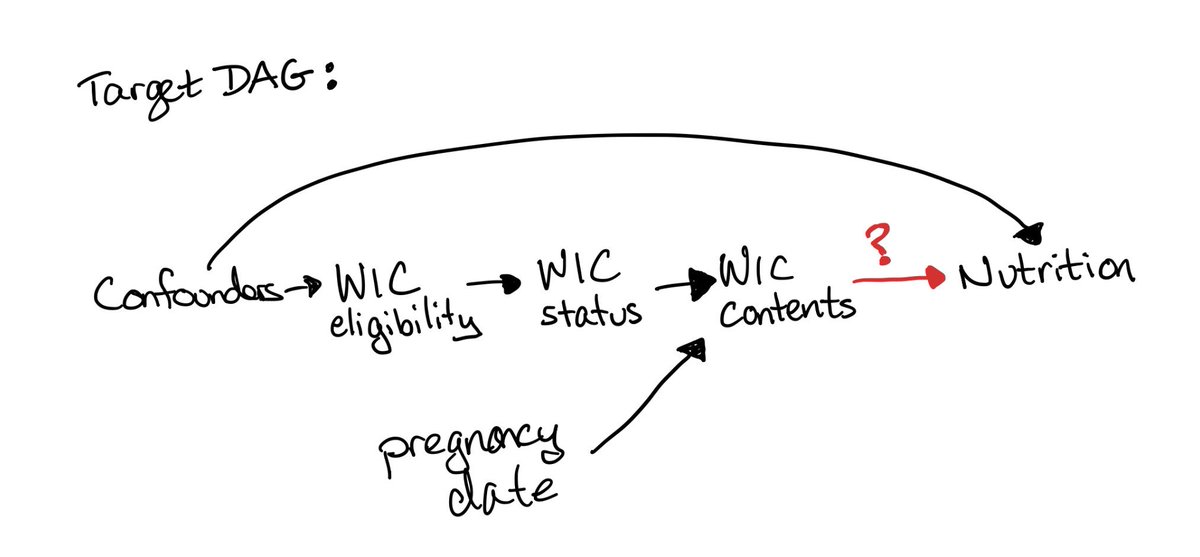
Anyone got anything to add?
Thinking about using it in your research?
Got any questions or concerns there?
Share your thoughts in the comments!




